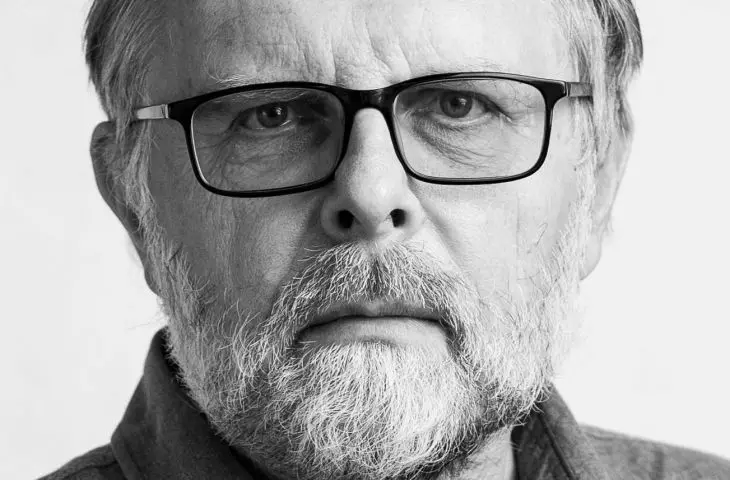We lack awareness that urbanized areas are places where people live, but these areas should cooperate with nature. In the meantime, man tears out more fragments of nature and builds up in his own way, and then it all comes back on us," says Professor Szymon Malinowski, an atmospheric physicist from Warsaw University.
Szymon MALINOWSKI - Professor. Atmospheric physicist, specialist in cloud and precipitation physics and numerical modeling of atmospheric processes, director of the Institute of Geophysics at the Faculty of Physics, University of Warsaw, founder and editor of Naukaoklimacie.pl.
Ewa Karendys: Investors boast that more and more buildings in Poland have green certificates. Is this greenwashing or an action that actually brings results?
Prof. Szymon Malinowski: The offsets associated with many certificates are largely
greenwashing. The requirements of the certificate are easier to meet than the actual conditions related to environmental protection and sustainability. Certifications don't have the effect they should, they serve more to soothe consciences and are used for marketing.
Ewa Karendys: According to the Polish Green Building Association, there are more than 1,600 such buildings in the country. Will they change little?
Prof. Szymon Malinowski: If we are talking about the energy class of a building examined by reliable specialists, then of course this is valuable information: how energy-intensive the building is and what can be expected during operation. However, the issue of energy efficiency is only one aspect of sustainability - important, but not the only one.
Ewa Karendys: It is estimated that the construction and operation of buildings is responsible for as much as 36 percent of global greenhouse gas emissions. Meanwhile, we are building on a massive scale and yet we keep hearing absurd slogans that the country is short of 2 million housing units.
Prof. Szymon Malinowski: And this is not just a Polish issue. At the moment, the mass of human creations on the planet, mainly buildings and infrastructure, is greater than the mass of all living nature. Of course, I understand the need to build housing for young people, but I don't understand how it is that the population is falling, new buildings are coming, and all the time there is such a shortage of housing.
A huge part of the buildings under construction and older buildings and apartments stand empty - in cities, but also outside them. They serve as a second or third dwelling, another house, eat up energy, materials. Add to this the infrastructure: bringing in water, electricity, sewerage or drainage and sewage treatment. From the point of view of the environmental footprint, this is extremely wasteful. On top of that, there is also chaotic land use. As the Climate Crisis Committee, we recently issued a communiqué on spatial planning in Poland and the climate crisis. Planning is dramatically bad. We have a poor tradition of building everything everywhere. Then you have to bring infrastructure to it, which by its nature is very scattered.
Ewa Karendys: Just before our conversation, I was in Gdynia, where five identical apartment buildings have been built right next to the Fisherman's Pier, which stand empty for part of the year, because they are inhabited mainly during the season. Expensive ground-floor units also shine with emptiness. This is an example of how new expensive developments are underutilized.
Prof. Szymon Malinowski: It is not used, and yet it costs money. Investors put up buildings and want the local government to provide basic infrastructure. And investors and local governments generally don't think about environmental costs, they only reveal themselves when, for example, it rains and the area is flooded, when trees have been cut down for an investment, and new ones don't want to grow and don't provide shade, because groundwater has been depleted.
Ewa Karendys: How do you find solutions that will have a good effect?
Prof. Szymon Malinowski: Good solutions are unpopular, because everyone who owns a piece of land thinks he can do anything with it. Here you need to understand the importance of the public good and private-public relations on many levels.
In Gdansk, an investor would like to replace the existing Manhattan shopping center with 120-meter residential towers with services
photo: Ewa Karendys
Ewa Karendys: On top of that, we have tremendous pressure from the development industry....
Prof. Szymon Malinowski: ...and there is a lack of environmental pressure. An example? In Warsaw, investors are planning to develop the environmentally valuable land around Lake Czerniakowskie. We have wetlands there that maintain water relations in the area. This is the kind of land we lack in the city: providing opportunities for natural retention, enriching biodiversity. The trouble is that at the same time the site is very attractive to investors.
If we look at the map of fire department interventions after heavy rainfall in Warsaw, we can see that such sites are increasing - precisely because of complete disregard for environmental requirements.
Ewa Karendys: Is intensive development to blame?
Prof. Szymon Malinowski: Not necessarily intensive. For example, in the vicinity of the Kabaty Forest, natural watercourses are being filled in, roads are being made without any culverts, sometimes built higher than the residential area, so that they constitute dykes and impede water drainage. This is an example of complete disregard for the simplest relationships that exist in nature.
Of course, we also have problems with the heat in the city, with the cutting down of old trees, with buildings that are too high and too intense. We lack the awareness that urbanized areas, are places where people live, and these areas should cooperate with nature. Man tears out more fragments of nature and builds up in his own way, and then it all comes back on us.
Ewa Karendys: Is it the role of local government to limit investment activities?
Prof. Szymon Malinowski: First of all, one can start with the law at the national level, which for now is very vague and underestimates the long-term effects of the climate crisis. I partly understand that local governments are bowing to developer pressure, but this interest is short-term. There is a lack of counterbalance, because developers have a lot of financial power, they make serious profits in the short term, but the costs are passed on. And here we lack a law that would make such activities more difficult.
The owner of Gdansk's Alfa Centrum in place of the shopping center is floating plans to build apartments and apartments for rent
Photo: Ewa Karendys
Ewa Karendys: The same developers boast that they focus on sustainable development, introduce greenery, create elements of small retention.
Prof. Szymon Malinowski: Often this boasting is over the top, and the actions do not compensate for the environmental costs. Development is too intensive, too few places left to nature. And if we talk about retention, it is very often only retention in the form of technical devices. She is designed on the basis of various engineering standards, which, while great that they are, were developed in a past climate. They don't work now, much less will they work in the future. This is another example where we spend money, use a lot of materials, and know from the beginning that these devices will perform poorly.
Ewa Karendys: What amazes me is what is happening with shopping malls. In Gdansk, Poznan or Krakow, buildings that are several years old are being demolished or planned for demolition. In order to build something new, bigger and more profitable in their place.
Prof. Szymon Malinowski: Such development has come at a great environmental cost, and unfortunately it will be recirculated at a great environmental cost as well.
Ewa Karendys: The closed loop economy itself, circular architecture - do they make sense?
Prof. Szymon Malinowski: This is a false slogan, because the closed-loop economy does not take into account the fact that a large part of the circuits cannot be closed. And secondly, reclaiming all sorts of raw materials requires huge amounts of energy and huge expenditures. So let a developer put up a new building every fifteen years, but let him bear the full cost of disposing of the old building! In Warsaw, for example, the new Mordor office buildings are being demolished and intensive residential development is being built in their place. I myself would not live there in my life: people will look into each other's windows, there is little green space. We often hear that where there is transportation infrastructure, as many people as possible should live there. The trouble is that blue-green infrastructure is not included in this thinking.
The intensive and overwhelming development that has sprouted up near the entrance to the park in early 2023
photo: Ewa Karendys
Ewa Karendys: Should architects take more responsibility for environmental impact when making design decisions?
Prof. Szymon Malinowski: It would certainly be a very good idea to prepare projects solidly in terms of energy consumption and human comfort, given that we should expect increasing heat in urban spaces. I myself work in a relatively new, very nice by the way, building that is energy disastrous: it has huge spaces, lacks the ability to cover the huge windows from the outside. Comfort is provided by energy-intensive air conditioning, passive solutions are practically non-existent. New apartments look similar. In the absence of even shutters on sunlit areas, the only solution for the resident is to put in a huge air conditioner, which devours huge amounts of energy. Neither is it pretty, nor is it good.
Ewa Karendys: In that case, is limiting development a direction that brings results? And what is the best solution from the point of view of climate change?
Prof. Szymon Malinowski: The fundamental principle that we fail to implement all the time is the issue of decent estimation of environmental costs, the carbon and water footprint of investments. As long as we don't take these costs and footprints into account, we won't have the motivation to get serious about the consequences of bad construction. We also don't think at all about the fact that we should give 30 percent of the land back to nature.
A pond in Reagan Park in Gdansk
Photo: Ewa Karendys
Ewa Karendys: The situation is also made more difficult by the fact that we still have a group of unbelievers undermining climate change. They see the European Union, which announces climate regulations, as an outsider in the world. But it is China that is preparing the largest reduction in carbon emissions in history. Isn't the EU the only place today where pro-climate action is accelerating?
Prof. Szymon Malinowski: China has a chance to achieve climate neutrality earlier than the European Union. They are fighting the emissions problem quite systematically. The difference is that Western countries have climate ambitions, which, after all, do not mean much by themselves, because Western emissions from consumption are growing all the time. The fact that we have exported some production outside and consume products and services imported from there does not mean that we emit less. On the other hand, those countries to which we have exported emissions are fighting them for themselves and for us. We could help them do so by introducing a carbon tax or environmental taxes at the border as well. Countries like China and India are more vulnerable to climate change than Europe. And they are aware of this. They also have an advantage: they take science and research results seriously. It's worth noting that most photovoltaics, much of the wind power equipment, and air conditioners are made in China.
The trouble is that there is a growing planetary crisis, on a human scale. And we want to solve this crisis through electric cars, through a closed loop economy. But all of our reasoning does not go beyond the practice of socio-economic activities of the past dozen or so years, decades, ignoring the need to respond to the unprecedented challenge we face.
Central Park in Gdynia, expanded in recent years
photo: Ewa Karendys
Ewa Karendys: Will you explain?
Prof. Szymon Malinowski: In short, we do not take into account the fact that man, carving out certain areas for nature, arranging to better himself on this planet, is not, as he once was, a small part of the earth system, but rules over all of nature. The effects of his actions shape the land, waters, air, but not in a way that is friendly to us and nature, but haphazard or even destructive.
An example of such ignorance? Who knows that the mass of all wild mammals living on land today is 20 million tons, those living in the oceans - 40 million tons, while the mass of all humans is 360 million tons, and the mass of those mammals that we breed mainly to eat is almost 700 million tons? These figures emphatically show the degree of human domination over nature. Having exterminated a large part of it, we still don't try to sort out our relationship with it, we think in terms of domination all the time. We don't think about how the house, the estate will fit into the way nature works, the ecosystems, the natural retention, the forests, the landscape. We mainly think about how to squeeze the most money out of a plot of land in a short period of time. One only has to drive along the Coast, for example, to see the scale of the destruction caused by such urbanization and development.
Ewa Karendys: A clear example is, for example, the giant hotel in Pobierowo....
Prof. Szymon Malinowski: That's right, but there are also activities on a smaller scale. I don't go to the Tatra Mountains anymore, especially Zakopane, and I've practically stopped cruising in the Mazurian Lake District. Disorderly urbanization is simply killing the qualities of these places. And unfortunately the same thing is happening to many other areas.
Ewa Karendys: Thank you for the interview!
interviewed by: {tag:AuthorA&B}
Read more: A&B 10/2024 - DEVELOPMENT AND CIRCULARITY,
download free e-issues of A&B































